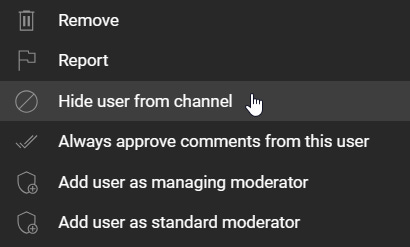YouTube's Comment Ranking Algorithm is Flawed
Why create a system that incentivizes behavior that you have to worry about later?
What happened?
I clicked on a 3-hour-long podcast that popped up on my YouTube Subscription page. It was uploaded 5 minutes ago. The topic was dense, and the opinions shared were controversial.
At around 20 minutes, the guest said something that really annoyed me. So, I went down to the comments section to share why that logical leap was unwarranted.
What I saw there surprised me. After about 25 minutes of uploading the dense video, there were thousands of comments, and the comments ranking system had pushed three types of comments to the top:
Comments expressing “love” for the guest/host
Funny comments
Spam comments that were disguised as generic “love the guest/host” comments.
I could hardly find a comment that was actually talking about the subject discussed in the video.
Why does YouTube have a comments section?
The comments section is a place for the people who watched the video to share their thoughts. Focus on the ‘the people who watched the video’ part. The current ‘like to make it go to the top’ system incentivizes talking about the person. Talking about the person doesn’t require you to watch the 3-hour long dense video.
People jump straight to the comments to leave a ‘Love the work you do. Thanks’ comment, and people who were there 5 minutes too late to get their own ‘I got a notification, so I clicked’ comment to rank higher just tap the like button on other generic comments.
Another issue is the ease with which a creator can delete a critical comment, which they do all the time. Some even hide the critical users from their channel to make them feel like their argument is being heard and to prevent them from letting others know that their comment was deleted. Only they can read their ‘comment’ now. It’s not a comment anymore, is it? Is it a note?
This leaves you with only the off-topic positive comments about the person/people. Mission successful!
That is unless you’re being trolled today. When people unite in their hatred, deleting all their comments becomes impossible.
‘Quality’ comments
Between the ‘love’ commenters and part-time trolls exist the people who care about the topic of the video and watch a lot of it before forming their opinions about it. Then they share it in detail, getting 3 likes, a random appreciation reply, and/or an implied debate challenge in the reply section (which is quite fun if the interlocutor is in a good mood).
The people who watch the most of a video are the most ‘qualified’ to comment. They are the least likely to troll since trolls are impulsive and have already made up their minds to watch the whole video.
These serious watchers will add to the learning experience by making an informed point and making the comments section a good-faith argument exchange space, whether critical or complimentary.
This will help the creators grow faster than ever before without getting pulled into the toxicity of internet name-calling.
‘Watch time’ isn’t enough
Prioritizing comments based on a user’s watch time of the video is a no-brainer.
This will also wipe out spam comments from across YouTube. If they still decide to spam, they will have to watch the entire video first, slowing them down enough to permanently slow them down. It’s like making a spammer run a marathon before they can spam you. Genius, right?
However, that shouldn’t be the sole metric used to rank a comment higher. We don’t want to create a dictatorship of the binge-watchers.
Watching a video fully doesn’t guarantee you’ll make a quality comment, so we need to add comment likes to the mix. Let the viewers decide which informed comment is the best.
There’s one more thing we need to use to rank comments: randomness. Watch time and likes alone will bias old users who finished the video quickly and got liked to the top. The new watchers with new perspectives need a good enough incentive to comment. They need to know their updated insight has a good enough chance of being heard.
All these changes will do four things:
Encourage informed information sharing over impulsive comments.
Stop trolls and spammers.
Encourage more comments.
Make YouTube comments a go-to place for thought-provoking exchanges.







